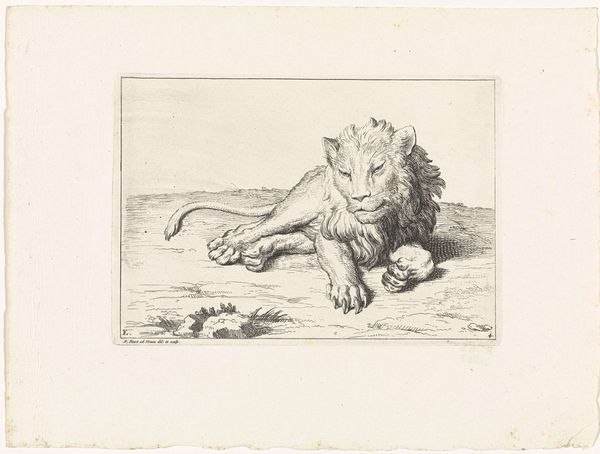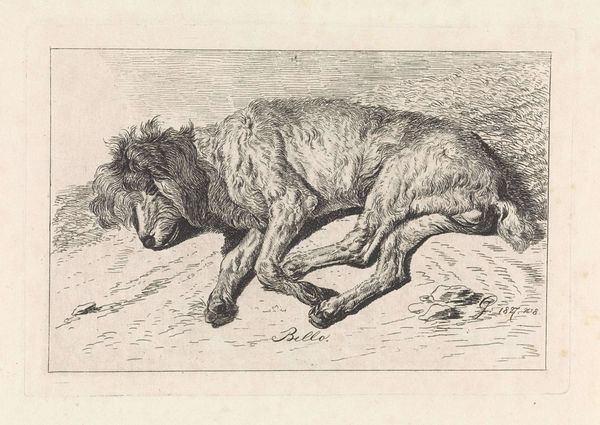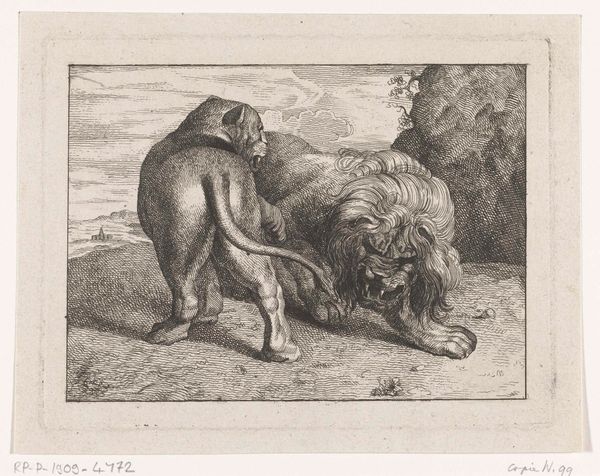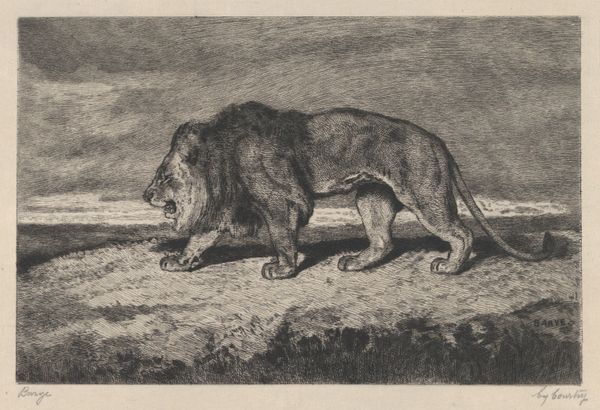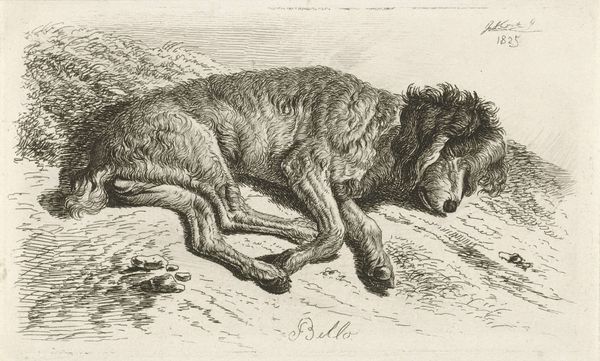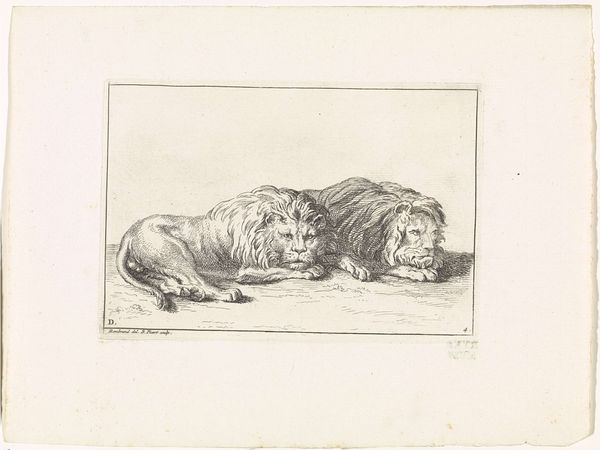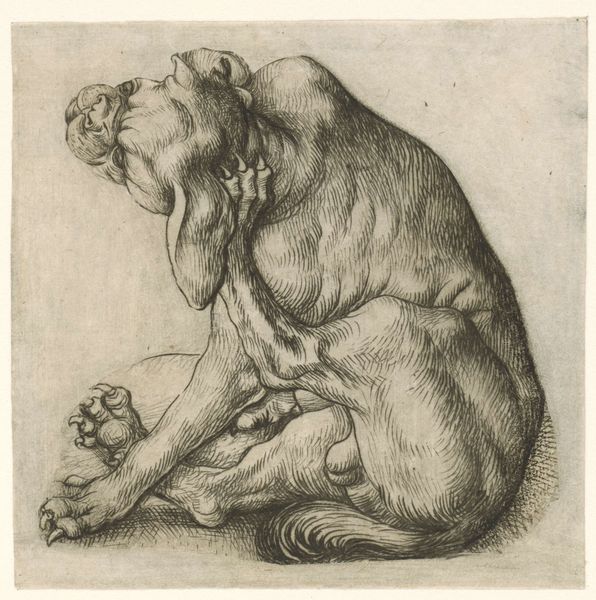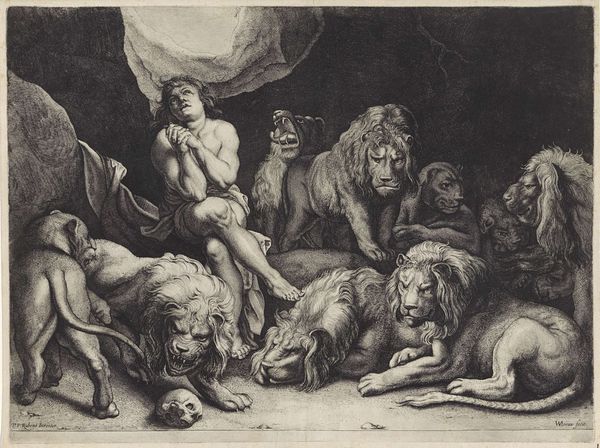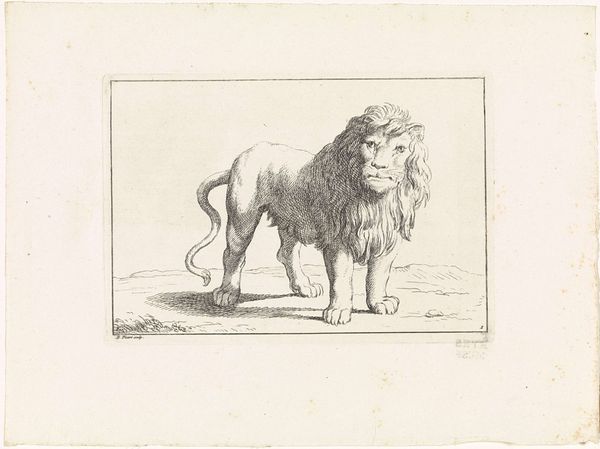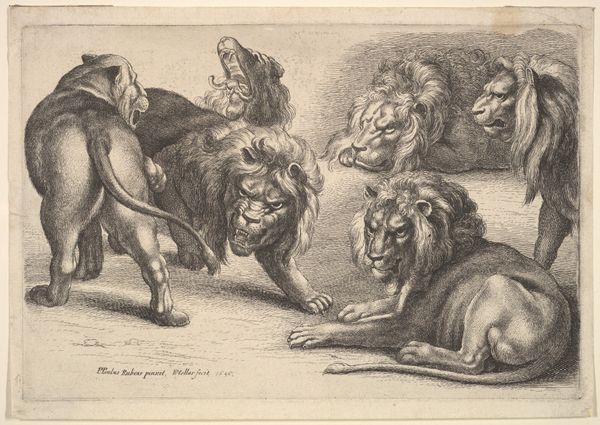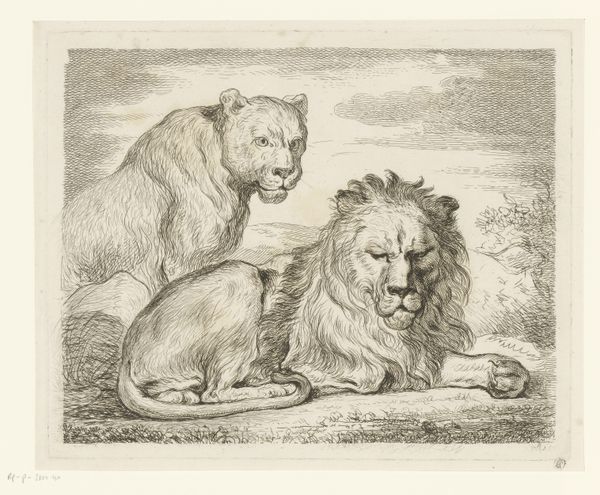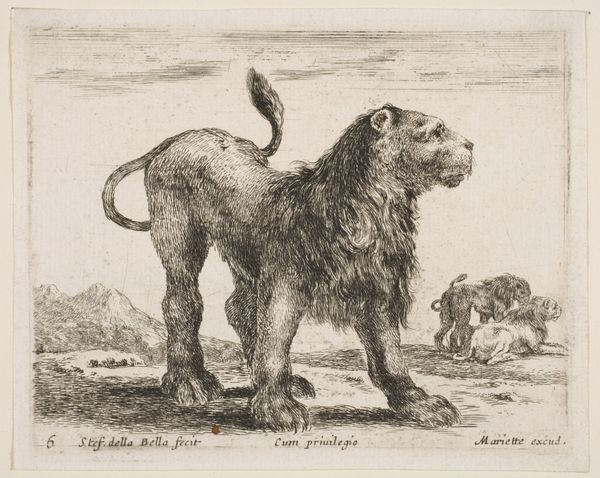
engraving
#
baroque
#
old engraving style
#
caricature
#
figuration
#
form
#
limited contrast and shading
#
line
#
portrait drawing
#
engraving
Dimensions: height 149 mm, width 191 mm
Copyright: Rijks Museum: Open Domain
Curator: This engraving, “Zogende leeuwin,” or “Nursing Lioness,” was created by Charles II Errard sometime between 1616 and 1689. It resides here at the Rijksmuseum. Editor: My immediate reaction is how tender, almost weary, the lioness seems. It's a fairly simple composition, primarily the large form of the lioness in the foreground and a darkened space, presumably her den, behind. Curator: Yes, the engraving technique itself is interesting here. Observe how Errard employs line and form to describe the lioness’s bulk. There’s a real sense of weight and presence achieved through a relatively spare use of hatching and cross-hatching. Notice also the subtle variations in line weight to define the contours of the animal. Editor: I agree. And the subject matter—the nurturing mother—speaks to enduring themes about the feminine divine, especially when situated within a patriarchal society that often equates power with masculinity. It offers us, perhaps, a glimpse into an alternative vision of strength rooted in care and protection. It's not about dominance but sustenance. Curator: That's certainly one way to interpret the image, although such readings are contextual, of course. Structurally, one might argue the formal dynamic lies in the interplay between the smooth volumes of the lioness’s body and the starker lines defining the environment. The artist invites us to consider balance of these visual forces, one smooth, one angular. Editor: I wonder if the image resonates because of how it challenges ingrained views about female power? Lionesses are providers, hunters, family-focused. Their capabilities are usually seen secondary to the alpha male in most media portrayals of the species. This print, knowingly or not, emphasizes matriarchal qualities. Curator: Indeed. One must appreciate the image for what it is: A study in form, line, and tone within the conventions of Baroque engraving. It is Errard skillfully translating observation and understanding of form through medium and method. Editor: And for offering us an unexpectedly tender portrayal of fierce motherhood that challenges conventional ideas. It is a potent reminder that displays of nurturing and strength do coexist. Curator: I would argue Errard gives his composition presence because of carefully managed light and dark spaces. Editor: To me, its lasting power hinges upon reminding me to evaluate both strength and femininity.
Comments
No comments
Be the first to comment and join the conversation on the ultimate creative platform.
